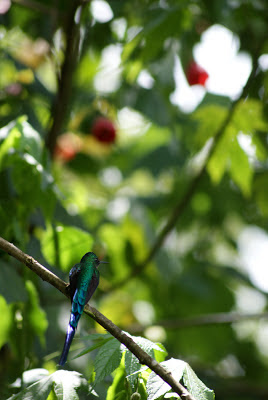Rich and aromatic, dark and velvety. Even as someone who
drinks very little coffee, I can appreciate a good cup o’ joe. And, seeing as
coffee is second only to oil in global exports, I am clearly not the only one.
When it comes to getting a cup of high quality coffee or espresso, there are
few places in the world better than the rolling green hills, crisscrossed and
sectioned, of Colombia’s Zona Cafetera.
Colombia, home of the world-recognized (fictional) Juan
Valdez, is number two in global coffee exports and the number one producer of Arabica,
the world’s highest quality coffee. The label ‘Colombian Coffee’ has become
synonymous with excellence. So, we made it a list item to tour a coffee farm
(or ‘finca’) and see what the fuss was about.
The tour of a local, family-run coffee finca outside of
Manizales was conducted entirely in Spanish, and, despite our speaking skills
not being up to par, we had a surprisingly easy time understanding the majority
of what our guide was explaining. She led us through the entire planting
process, from tiny roots to fruit to roasted coffee beans, while showing us
each part of the process on the sprawling coffee plantation.
Win tried his hand at being a coffee laborer, searching each
branch for only the ripe, red fruit, plucking them individually, and watching
his bucket as it filled at an unbelievably slow pace. The life of these
workers, going from farm to farm, making a living one kilogram at a time,
cannot be easy. Yet, it is an integral step in the process, a process that supports
vast swathes of Colombia’s people.
Incredible time and consideration goes into each step of the
process, ensuring that the years of work that lead up to an individual harvest aren’t
wasted. Colombia’s coffee farms are outstanding in their emphasis on organic,
hand-picked crops, ensuring the absolute highest quality in the finished
product.
They are proud of the fact that they do not use machines for harvests,
that they rely on original sorting methods (does it float?) for separating good
beans from bad. They are proud that they are careful about what fuel is used
for roasting and what bags for storing to prevent flavor contamination. They
know that size matters, and sort the coffee beans as such. The coffee growers
know what works, and it is this human touch that distinguishes Colombian coffee
as some of the world’s finest.

























